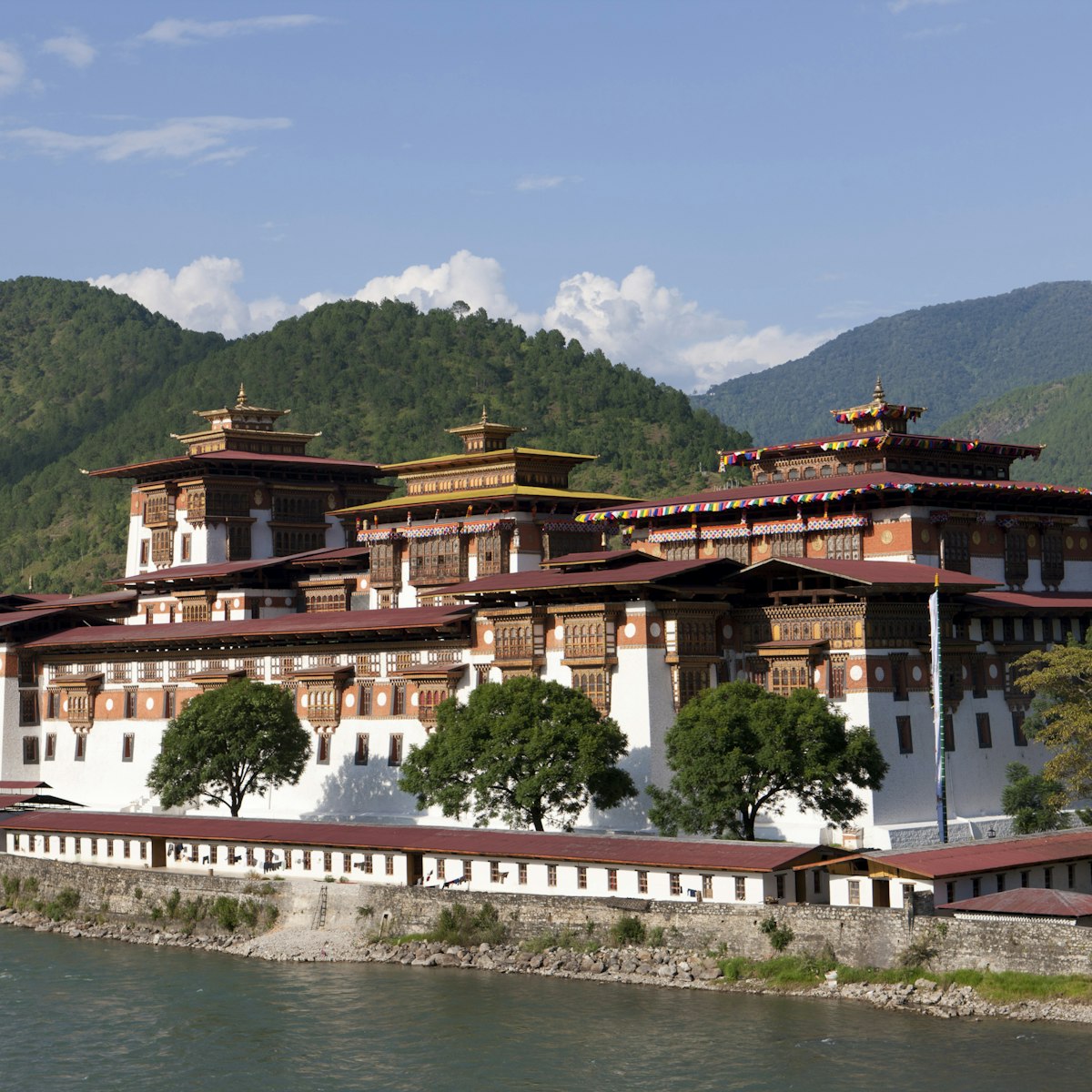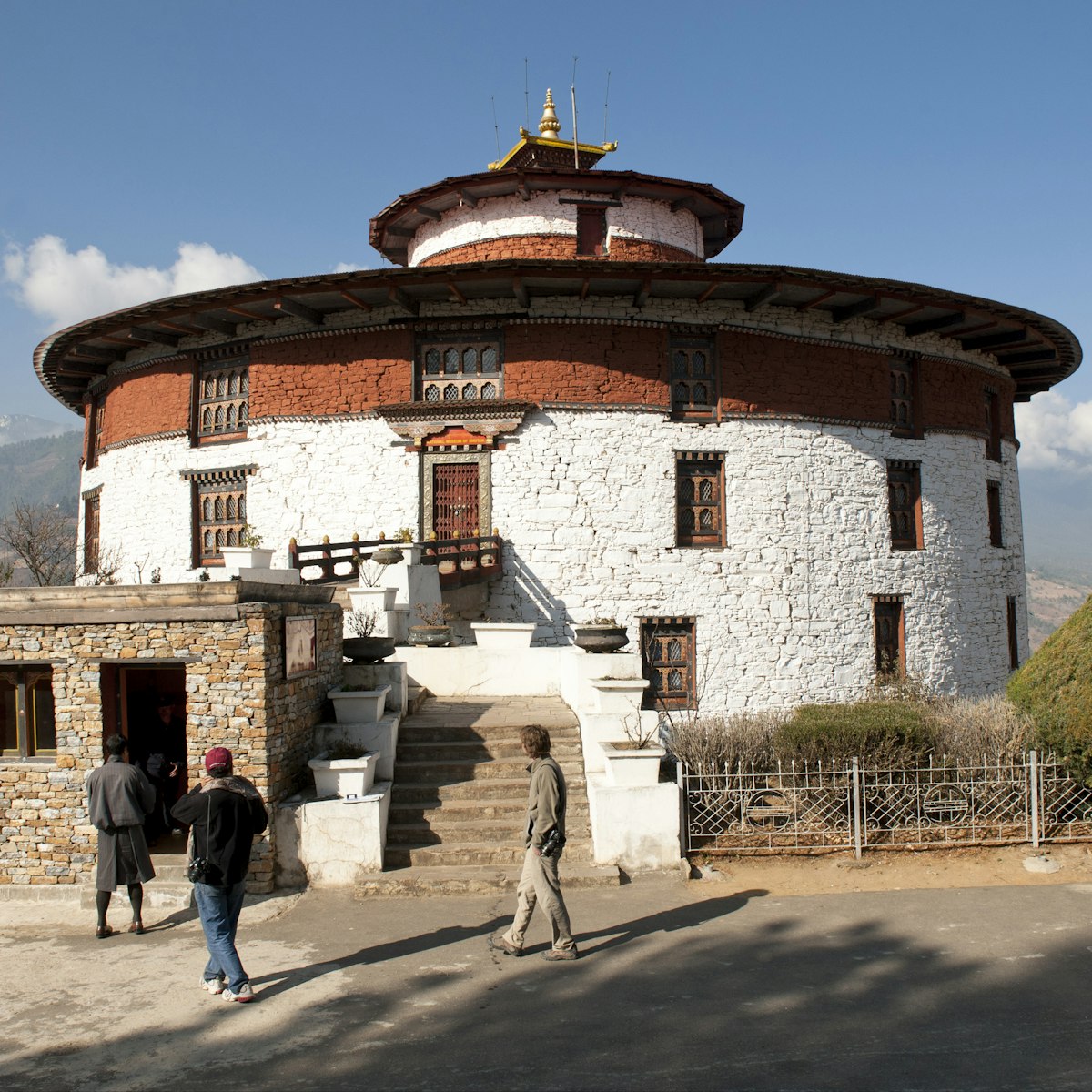The Wangdue Phodrang Dzong (Wangdi) was founded by the Zhabdrung in 1638 atop a high ridge between the Punak Tsang Chhu and the Dang Chhu, clearly chosen for its commanding view of the valleys below. Wangdi is important in the history of Bhutan because in the early days it was the site of the country's second capital. Sadly, the dzong caught fire on 24 June 2012 and was virtually destroyed save for the lower walls. The mammoth task of rebuilding it is expected to continue until 2021.
Legend relates that as people searched for a site for the dzong, four ravens were seen flying away in four directions. This was considered an auspicious sign, representing the spreading of religion to the four points of the compass. After Trongsa Dzong was established in 1644, the penlop (governor) of Wangdue Phodrang became the third-most powerful ruler, after Paro and Trongsa. The dzong's strategic position gave the penlop control of the routes to Trongsa, Punakha, Dagana and Thimphu.







